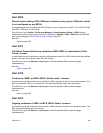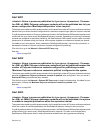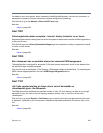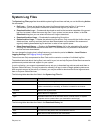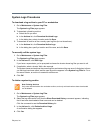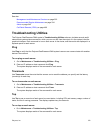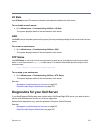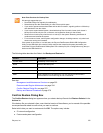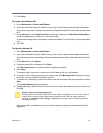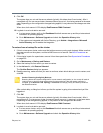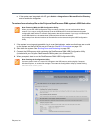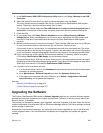
Polycom, Inc. 374
Backing Up and Restoring
Every night, each Polycom RealPresence DMA system cluster creates a configuration-only backup of the
system, which includes:
● Local user account information (including local data for enterprise users, such as conference room
attributes)
● System configuration data
● Supercluster and resource management system integration data (if applicable)
At any time, you can create either a configuration-only backup or a full backup, which adds all the
transactional data, including logs, CDRs, network usage, and audit (history) data.
The backup file is for the cluster, but on a two-server cluster, a copy of the backup exists on each server.
This ensures that the backup files are available even if one of the servers isn’t running.
The cluster keeps the most recent ten backups (deleting the oldest backup file when a new one is created).
The Polycom RealPresence DMA system’s Backup and Restore page lets you:
● Manually create a full or configuration-only backup of that cluster.
● Download backup files from the cluster for safekeeping.
● Delete backup files to free up disk space.
● Upload backup files to the cluster.
● Restore from a configuration-only backup file, which lets you return the system state (IP network
configuration, feature and system configuration, or both) to what was backed up, but leaves
transactional data stores (including logs, CDRs, and audit data) empty.
● Restore from a full backup file, which lets you return both the system state and the transactional data
stores (including logs, CDRs, and audit data) to what was backed up.
The option to omit IP network configuration (see Confirm Restore Dialog Box on page 375) makes it
possible to “clone” an existing RealPresence DMA cluster’s feature and system configuration to a new
cluster without introducing IP address conflicts.
In most cases, the software version of the backup file must match the system’s current software version in
order to restore from it. But specific releases may include the ability to restore a backup file from specific
earlier releases. For instance, because of a CentOS operating system change, no upgrade package is
available for version 6.0.2. But after installing version 6.0.2 (overwriting the existing installation), you can
restore your configuration and data from a version 5.2 backup.
Note: Backup Removal
The system may delete additional backups to free up disk space if necessary.



